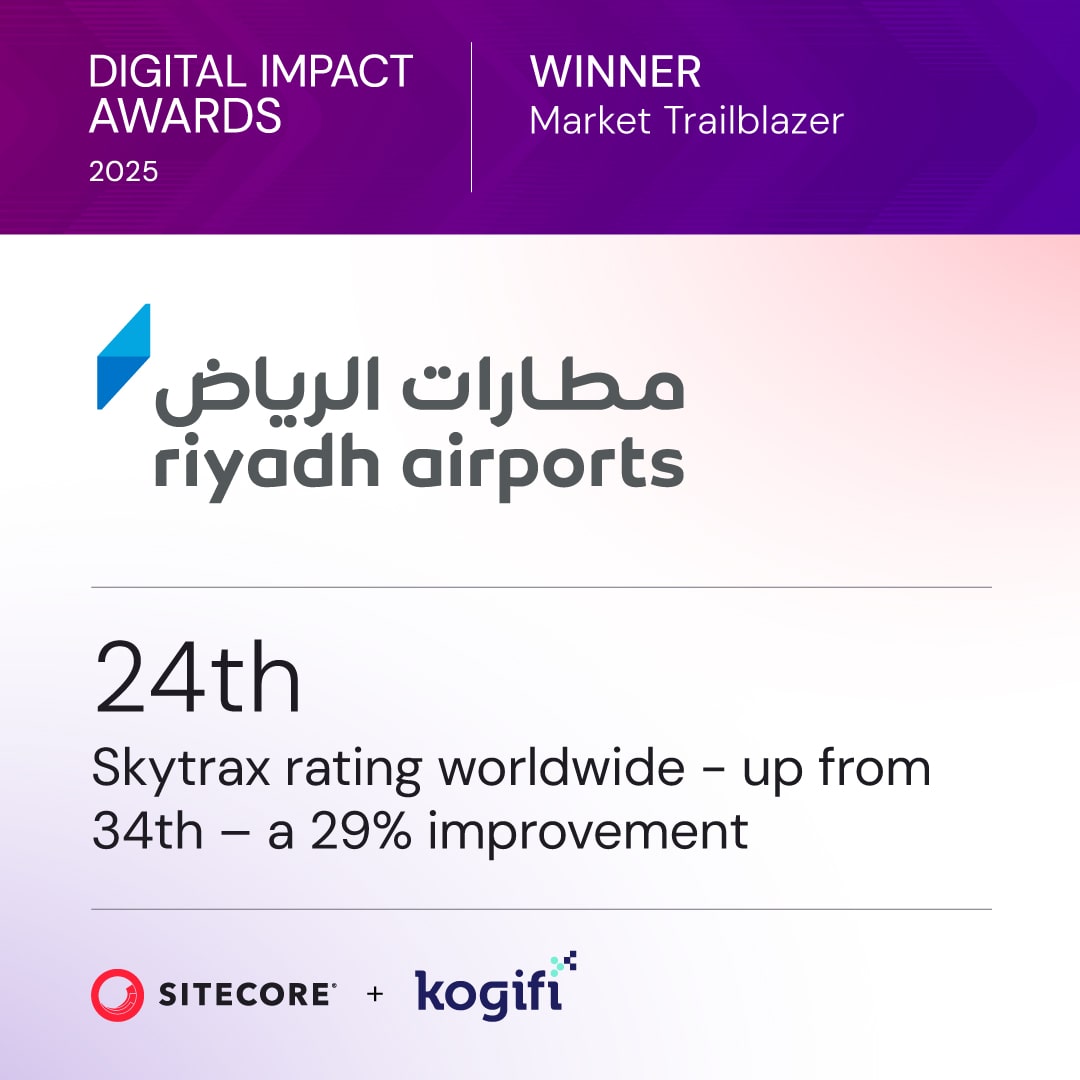Enterprise Information Architecture (EIA) isn't just about organizing data - it's about creating a framework that connects your organization's information, systems, and processes. Here's why it matters and how it helps:
- What is EIA? It links data to processes, IT systems, and responsibilities, answering key questions like: What is the data? How is it used? Who owns it?
- Why it matters: EIA improves usability, decision-making, and scalability. It helps businesses align IT with strategy, streamline operations, and enable AI-driven insights.
- Impact on customers: Better EIA leads to intuitive navigation, personalized experiences, and increased trust across digital platforms.
- Key components: Taxonomies, metadata management, and scalable models ensure efficient data handling and future readiness.
- Governance and growth: Regular audits, stakeholder input, and strong governance keep EIA effective and adaptable as businesses evolve.
The 'How' of Enterprise Information Architecture
Aligning IA with Business Goals and User Requirements
Creating an effective Enterprise Information Architecture (IA) is all about finding the sweet spot where business objectives and user needs intersect. When done right, this alignment can lead to noticeable improvements in efficiency, smarter decision-making, and a more agile organization. But here’s the catch: many enterprises struggle with this. For instance, only 28% of organizations regularly share their Enterprise Architecture (EA) insights with other teams. Bridging this gap is key to building an IA that delivers value to both the business and its users.
Identifying Business Goals
The starting point for successful Enterprise IA is having a clear understanding of what the business aims to achieve. These goals shape the structure of information and how it can be accessed. As one expert puts it, understanding business goals helps define the context of a page and ensures that the business supports users effectively.
A "business-first" approach to IA prioritizes aligning the architecture with organizational goals while keeping the user experience front and center. Every decision in the IA process should address this question: How does this structure help meet our business goals while serving the needs of users?
Unfortunately, many organizations struggle to connect these dots. Only 20% of companies, for example, actively model how future states will impact their business. To pinpoint the right goals for IA design, focus on objectives tied to information flow and user interaction. These might include improving customer satisfaction, reducing support tickets, boosting employee productivity, or speeding up product launches.
Once these goals are clearly defined, it’s essential to gather input from both stakeholders and users to guide the IA design process.
Gathering Stakeholder and User Input
Getting the right input from stakeholders is critical for designing an effective IA. The challenge isn’t just collecting feedback - it’s about ensuring that feedback comes from the right people at the right time.
Traditional research methods can be adapted to encourage collaboration. A great example comes from Content Science’s work with the CFA Institute:
"When the Content Science team was working with the CFA Institute to create new user journeys, we hosted several stakeholder collaboration sessions, being sure to get a variety of perspectives on how to help users find content across multiple channels."
Techniques like collaborative card sorting and tree testing can help stakeholders work together to organize information effectively. Usability testing with stakeholders allows for trial runs that uncover potential issues before rollout. Vision exercises, where stakeholders describe or sketch their desired outcomes, also provide valuable direction.
However, gathering input becomes more complex when dealing with diverse stakeholder groups. Internal stakeholders often focus on internal processes, while external stakeholders provide insights through methods like surveys or interviews.
Here’s a quick look at some common feedback methods and their benefits:
| Feedback Method | Best For | Key Benefits |
|---|---|---|
| Surveys and Questionnaires | Large stakeholder groups | Quick data collection, quantitative insights |
| Interviews and Focus Groups | Detailed responses | Rich qualitative data, collective feedback |
| Digital Platforms and Tools | Ongoing feedback | Tracks demographics, analyzes interactions |
AI tools can simplify data collection and provide actionable insights. For example, Stakeholder Experience Analytics can help organizations better understand interactions and align objectives with expectations.
The key is to act on feedback promptly. As the Sopact Team notes:
"Listening to your stakeholders is important. Acting on their feedback is what creates lasting value."
Focusing on User-Centered Design
User-centered design prioritizes the needs, expectations, and challenges of the end-user throughout the IA process. This approach doesn’t just enhance user experiences - it also drives measurable business results. For example, 67% of customers are willing to pay more for a great experience, and design-led companies have outperformed the S&P by 211%.
IA plays a crucial role in user-centered design by ensuring that users can navigate systems easily and find what they need without hassle. A well-thought-out IA boosts usability, improves discoverability, keeps users engaged, and can even lead to higher conversion rates.
The benefits of this approach are clear. Take BpiFrance, for example. In 2022, they launched a new lending product for small businesses in just two months - three times faster than previous launches - by working closely with users during the development process.
To achieve this kind of success, focus on user research, consistent terminology, and simplicity in IA design. Regular testing and iteration based on user feedback are also essential. This ensures the IA remains aligned with the organization’s broader digital strategy.
As Olha Bahaieva, Senior UX/UI Designer, explains:
"User-centered design focuses on putting the user's needs and problems at the heart of the design process."
For enterprise platforms like Sitecore, Adobe Experience Manager, and SharePoint, user-centered design is even more critical. These systems often serve a variety of users with different technical skills and information needs. Feedback loops - through testing, surveys, or interviews - help ensure the IA evolves to meet users’ changing needs.
Advocating for user-centered design within an organization means tailoring the message to different audiences. For example, highlight how it saves time for developers, improves ROI for executives, or reduces the workload for IT teams.
Building the Core Structure of IA
Once you've aligned your Information Architecture (IA) with business objectives and user needs, the next step is to establish a solid foundation. This is where you transition from planning to execution, focusing on three critical elements: taxonomies and ontologies, metadata management, and scalable structure models. These components help manage the complexity of enterprise-scale systems and ensure efficiency as your organization grows.
To put things in perspective, poor data quality costs organizations an average of $12.9 million annually. Additionally, enterprises that fail to adopt a metadata-driven approach to IT modernization can face up to 40% higher expenses in managing their data. Building the right core structure from the outset can save significant resources - both time and money - down the line.
Taxonomies and Ontologies
Taxonomies and ontologies form the backbone of any enterprise IA. Taxonomies are structured vocabularies organized hierarchically, making it easier to classify, search, and retrieve content. Meanwhile, ontologies go a step further by capturing complex relationships between concepts. They model these connections in detail, enabling automated reasoning and improving data interoperability.
To get started, use an existing taxonomy as a foundation. Identify key business objects, map their relationships, and define essential attributes. Focus on specific areas - like marketing or customer support - before expanding gradually. This step-by-step approach prevents unnecessary complexity and keeps the system manageable.
Metadata Management Best Practices
Metadata management is essential for creating context and ensuring consistent terminology. However, many enterprises struggle with rapid data growth, siloed operations, and limited visibility. These challenges contribute to the fact that over half of organizations face difficulties in managing their data. Even more striking, 68% of enterprise data remains unanalyzed, often because users can’t locate or make sense of it.
By implementing effective metadata management, organizations can discover, classify, and reuse data more efficiently. As Deloitte highlights:
"Managing your metadata is a prerequisite for providing insight into data flows and related controls in your organization."
A comprehensive metadata strategy should address four key types of metadata:
- Descriptive metadata: Helps with data discovery and identification.
- Structural metadata: Defines how data is formatted and organized.
- Administrative metadata: Outlines usage restrictions and access controls.
- Relationship metadata: Maps connections between different data assets.
To simplify governance and improve accessibility, assign clear ownership, adopt consistent standards, and make metadata management an ongoing, organization-wide process.
Scalable Structure Models
Enterprises manage far more data than smaller businesses - on average, seven times as much. This makes scalability a non-negotiable requirement for IA. A scalable design anticipates future growth by using modular components and templates that can adapt to evolving needs.
To achieve this, build on strong taxonomy and metadata frameworks. Use flexible categories, content versioning, and modular templates to prepare for expansion. A robust technical foundation is equally important. Integrating diverse data sources while maintaining high-quality standards supports advanced analytics. Additionally, adopting agile methodologies and cloud technologies ensures you can respond to changing business demands.
A great example of scalability in action is Netflix. The company transitioned from a monolithic architecture to a microservices model as it scaled. This modular approach allowed their teams to work independently while maintaining overall system coherence - a strategy that highlights the power of flexibility in enterprise IA.
Designing for Growth, Security, and Performance
Enterprise information architecture (IA) needs to scale with your business, safeguard sensitive data, and deliver top-notch performance. Enterprises face challenges like managing enormous data loads, adhering to strict compliance rules, and ensuring fast and reliable user experiences.
According to Gartner, by 2026, 90% of organizations will grapple with technical debt, consuming 20–40% of their annual tech budgets. On the other hand, McKinsey notes that companies leveraging modern architecture patterns can achieve a 60% faster time-to-market. These numbers underscore why designing IA with growth, security, and performance in mind is essential for long-term success. Let’s explore how to achieve this balance.
Building Scalable Modular Design
Scalability goes beyond accommodating more users - it’s about adapting to evolving business needs without a complete overhaul. Modular design divides applications into reusable components that can be updated independently.
To ensure scalability, focus on horizontal scaling by implementing stateless services, distributed databases, and elastic cloud infrastructure. This approach ensures smooth customer interactions, even during high-traffic periods.
For effective modular design, consider the SCALE framework and allocate resources using the 70-20-10 rule: 70% for maintaining stability, 20% for optimization, and 10% for innovation. Additionally, adopting a technology-agnostic approach prevents vendor lock-in, offering flexibility for future changes.
Meeting Security and Compliance Requirements
Security and compliance must be baked into your IA from the start. With the average cost of a data breach reaching $4.88 million, it’s crucial to prioritize protection. A secure IA relies on four pillars: confidentiality, integrity, availability, and compliance. Many enterprises now adopt Zero Trust strategies to tackle both external and insider threats, which helps build user trust and engagement.
AI is also transforming compliance management. Moody’s research shows that 68% of organizations expect AI to play a transformative role in compliance within the next three years. AI tools can automate vendor risk assessments, detect threats faster, and predict vulnerabilities before they escalate.
Here’s a look at how compliance requirements vary by region:
| Region | Key Requirements | AI-Specific Considerations |
|---|---|---|
| European Union | GDPR Article 44-49, data localization | AI processing within the EU, model training data residency |
| United States | State laws (CCPA, CPRA), sector-specific (HIPAA) | Restrictions on cross-state data movement, federal contractor requirements |
| Canada | PIPEDA, Quebec Bill 64 | Transparency in AI decision-making, algorithmic impact assessments |
| Asia-Pacific | National frameworks (Australia Privacy Act) | Cross-border data transfer restrictions, local processing requirements |
To strengthen your security posture, establish clear policies that define security roles, data handling procedures, and incident response protocols. Regular risk assessments and automated monitoring tools can help detect and address vulnerabilities continuously.
Monitoring and Maintaining IA Performance
Even the most well-designed IA systems need ongoing monitoring to sustain optimal performance. Begin by defining monitoring goals that align with your business objectives. Evaluate infrastructure capacity - like CPU cores, RAM, network throughput, and disk I/O - and track metrics such as response times, error rates, and network latency. Set baseline thresholds to trigger alerts when performance deviates from expected levels.
Distributed tracing is a powerful tool for pinpointing issues quickly. Companies like Netflix, Twitter, and Uber have demonstrated how transitioning from monolithic architectures to microservices and distributed systems can improve reliability, fault isolation, and resource efficiency.
"Performance monitoring and optimization in enterprise-level Internet architecture is crucial for ensuring smooth operation and high-quality user experience." - Tencent Cloud
Implement end-to-end monitoring that covers everything from infrastructure to user behaviors. Define service level objectives (SLOs) to uphold performance standards and regularly test recovery mechanisms by simulating failures. Documenting workflows, configurations, and troubleshooting steps ensures consistency in resolving issues.
Collaboration across operations, QA, and security teams is vital for identifying hidden bottlenecks and vulnerabilities. Finally, adopt a mindset of continuous improvement by routinely refining your monitoring strategies to meet changing demands and industry trends.
sbb-itb-91124b2
Creating Navigation Patterns and Platform Integration
Good navigation is the backbone of any enterprise system. It turns complex digital platforms into user-friendly experiences. When users can't locate what they need quickly, frustration sets in, and productivity takes a hit. The solution? Develop navigation patterns that flow effortlessly across your digital ecosystem while integrating effectively with your enterprise platforms.
Navigation Models for Enterprise Platforms
Enterprise applications face challenges that smaller systems don’t. With vast amounts of content and features, these platforms demand navigation approaches more advanced than simple menu structures. While flat navigation might work for small systems, enterprise platforms thrive on multi-level menus and intuitive wayfinding tools.
- Global Navigation: Think of this as your system’s compass. It ensures users have consistent access to primary functions, no matter where they are within the platform.
- Hub Navigation: Instead of mirroring corporate hierarchies, this groups related content and features around user tasks and workflows, making it easier for users to accomplish their goals.
- Local Navigation: Provides contextual guidance within specific sections or workflows, helping users stay oriented as they dive deeper into the platform.
Collaboration is crucial when designing navigation for enterprise systems. Start with a kickoff meeting to align on goals and roles. Follow this with brainstorming sessions to identify challenges and opportunities. Use tools like affinity diagramming to organize ideas into clear, actionable categories.
Breaking down complex systems into smaller, manageable components further enhances usability. Labels should be clear and align with how users naturally think and search. These strategies create a solid foundation for integrating your information architecture (IA) with enterprise platforms.
IA Integration with Enterprise Platforms
Blending your information architecture seamlessly with enterprise platforms is essential for building scalable and consistent digital experiences. Many enterprises rely on global content management systems (CMS) to achieve this.
-
Sitecore Integration: This .NET-based platform excels in personalization and centralized content management. Its content tree structure and templates mirror your information hierarchy and maintain consistent metadata and taxonomy. As one Application Development Senior Analyst put it:
"Sitecore really helps us to provide a customized and personalized experience for our website users across various channels and efficiently create and manage our digital web content for marketing purposes."
-
Adobe Experience Manager (AEM): With its Java-based, component-driven architecture, AEM is perfect for managing dynamic digital assets. It uses technologies like OSGi, Oak, JCR, and Sling to support a modular design, enhancing scalability. One SVP of Marketing highlighted the benefits:
"The speed at which we can spin up micro-sites for regional events and conferences has been a game changer for us with AEM. We used to ask our internal web team to create these micro-sites, and there was a lead time of at least four weeks. Now I can have a single 2-3 page website up and running in a few hours."
To maximize AEM’s potential, align your IA with its reusable component library and template system.
- SharePoint Integration: As a collaboration and document management platform, SharePoint requires a different approach. Build site hierarchies that reflect your organizational structure and use metadata and content types to maintain consistent taxonomy across libraries and lists.
Effective platform integration also depends on solid technical planning. A centralized integration platform or middleware solution can simplify message routing, transformation, orchestration, and monitoring. RESTful APIs and JSON are industry standards for this purpose. The Application Integration Market, valued at $15.2 billion in 2023, is expected to grow to $54.9 billion by 2030, with a CAGR of 20.1%.
To ensure smooth integration, focus on data quality and governance. This includes implementing validation and cleansing rules, along with robust security measures like authentication, authorization, and encryption. Monitor performance using metrics such as message throughput and latency. Build for future growth by adopting agile methodologies and DevOps practices, working closely with business, IT, and data governance teams.
For organizations using platforms like Sitecore, Adobe Experience Manager, or SharePoint, working with experts familiar with both IA principles and platform-specific capabilities can make all the difference. At Kogifi, we specialize in digital experience platforms and enterprise CMS solutions, helping businesses achieve seamless integration and scalable digital solutions.
IA Governance and Ongoing Improvement
Building on the scalable and secure architectures discussed earlier, strong IA governance ensures your information architecture (IA) stays effective and relevant over time. As enterprise platforms continuously evolve, your IA must adapt alongside them. A well-thought-out governance strategy ensures your digital ecosystem aligns with shifting business priorities while maintaining a foundation of scalability and security.
Setting Up IA Governance
Effective IA governance starts with clearly defined accountability and decision-making processes. Just like other areas of governance, IA management requires structured oversight, with specific roles, responsibilities, and workflows to maintain consistency across your enterprise platform.
A robust governance framework includes policies, risk monitoring, and the necessary tools to support these efforts. The governance team should represent multiple functions, bringing together experts from data, engineering, legal, and sales departments.
"If you don't have a well-defined framework or clearly articulated responsibilities, things are going to slip through the cracks, and that can have significant unintended consequences on individuals and groups. Data breaches, for example, can carry steep fines that are enough to shut companies down." - Sucharita Venkatesh, Senior Director, Risk Management, Publicis Sapient
The good news? You don’t have to start from scratch. Most organizations already have existing policies that can be adapted for IA governance. Todd Cherkasky, Group Vice President of Customer Experience and Innovation Consulting at Publicis Sapient, highlights this approach:
"Building a governance framework doesn't necessarily require you to invent things from zero. You've got lawyers in place that are looking at policies that are already anticipating some regulatory changes, for example, so you could do an assessment about where the gaps are. The goal is to supplement existing policies and frameworks and make them more durable." - Todd Cherkasky
Start small by focusing on key use cases, then expand your framework as you gather insights.
Regular Audits and Stakeholder Feedback
After establishing your governance framework, regular audits are crucial to ensure its effectiveness. These audits act as health checks for your IA, helping you identify strengths, weaknesses, and areas for improvement. They should cover aspects like data quality, navigation efficiency, and alignment with business goals. Engaging stakeholders at every stage of the audit process is equally important.
To get the most out of audits, define their purpose upfront and guarantee confidentiality to encourage honest input. Most importantly, act on the findings and communicate the resulting changes back to stakeholders. Bringing in external auditors periodically can provide a fresh perspective and help benchmark your IA against industry standards.
Working with Enterprise Experts
Managing IA governance for enterprise platforms often requires specialized skills that many organizations don’t have in-house. Platforms like Sitecore, Adobe Experience Manager, and SharePoint come with unique challenges related to configuration, integration, performance, and security. These complexities can overwhelm internal teams.
Professional IA management services offer end-to-end support, from conducting detailed audits to managing complex migrations and providing 24/7 monitoring. For example, at Kogifi, we focus on digital experience platforms and enterprise CMS solutions, offering tailored expertise for challenges specific to enterprise IA. Our services include platform implementation, updates, audits, bug fixes, recovery, and migrations, ensuring your IA stays aligned with your business needs.
Investing in professional IA management delivers measurable benefits, such as better user experiences, lower maintenance costs, and faster adaptation to new requirements. With businesses expected to spend $15.8 billion on AI governance software by 2030, the demand for structured, expert-supported IA management will only grow.
Additionally, working with external specialists gives you access to best practices and emerging trends that internal teams might not have the capacity to explore. This outside perspective ensures your IA governance keeps pace with technological advancements and evolving user expectations.
Conclusion
The earlier sections broke down the fundamental elements of successful enterprise information architecture (IA). Let’s bring it all together. A well-designed enterprise IA strikes a careful balance between business goals, user needs, and technical considerations. As The Open Group puts it:
"Enterprise architecture in its widest sense includes much more than IT. It covers business operations, finance, people, and buildings in addition to technology, and it covers technologies other than IT, such as manufacturing or transport."
This broad perspective ensures that your IA delivers value across every aspect of your organization.
When IT infrastructure aligns with business objectives, it drives improvements in customer experience, operational efficiency, and employee satisfaction. Such alignment empowers businesses to implement change and embrace innovation with greater precision and impact.
A user-first approach is essential for effective IA. By diving deep into user research, crafting detailed personas, and creating intuitive navigation systems, you can design solutions that ease cognitive load and allow users to achieve their goals seamlessly. Accessibility is another critical piece, ensuring that content is usable for everyone, including individuals with disabilities.
On the technical side, elements like taxonomies, metadata management, and scalable structural models form the backbone of a reliable IA. But these components only thrive when paired with strong governance. With 80% of business leaders identifying AI-related concerns - such as explainability, ethics, and trust - as barriers to adopting generative AI, governance becomes a key factor in future-proofing your architecture.
Finally, scalability, security, and performance are non-negotiable. Your IA must handle increasing workloads, larger datasets, and growing complexity without sacrificing stability. Achieving this requires investing in adaptable infrastructure, fine-tuning data management practices, and fostering collaboration among cross-functional teams to address challenges before they escalate.
FAQs
What are the best ways for enterprises to design Information Architecture (IA) that meets both business objectives and user needs?
To build effective Information Architecture (IA), enterprises should start by collaborating with key stakeholders early in the design process. This approach ensures that both business objectives and user needs are clearly defined and seamlessly incorporated into the architecture.
Relying on standardized frameworks and enforcing consistent governance helps keep IA aligned with long-term business goals. Regularly reviewing and updating the architecture ensures it evolves alongside shifting objectives and user expectations. Striking this balance allows enterprises to improve user experiences while staying true to their strategic goals.
What challenges do enterprises face with metadata management, and how can they address them?
Managing metadata effectively is no small feat for enterprises. Common hurdles include inconsistent standards, fragmented metadata scattered across silos, poor data quality, and mounting concerns around security and privacy. These challenges can create inefficiencies and make it harder for businesses to make informed decisions.
To tackle these issues, organizations can take a few important steps. Setting up centralized metadata repositories helps consolidate scattered data. Adopting standardized frameworks ensures consistency across systems. And leveraging advanced management tools keeps metadata validated and accessible. Together, these strategies improve data reliability, strengthen security, and make metadata easier to use across platforms - ultimately paving the way for smarter business decisions.
How does a user-centered design approach in enterprise information architecture improve customer satisfaction and business results?
The Importance of User-Centered Design in Enterprise Information Architecture
Taking a user-centered design approach in enterprise information architecture ensures systems are easy to navigate, intuitive, and aligned with what users actually need. This means fewer headaches for users, smoother navigation, and a more enjoyable overall experience.
But it’s not just about making users happy - it’s also good for business. Companies that prioritize user needs often see higher customer retention, increased transaction rates, and lower support costs. When you create systems that genuinely work for people, you build trust and loyalty, setting the stage for long-term success and stronger results.








































